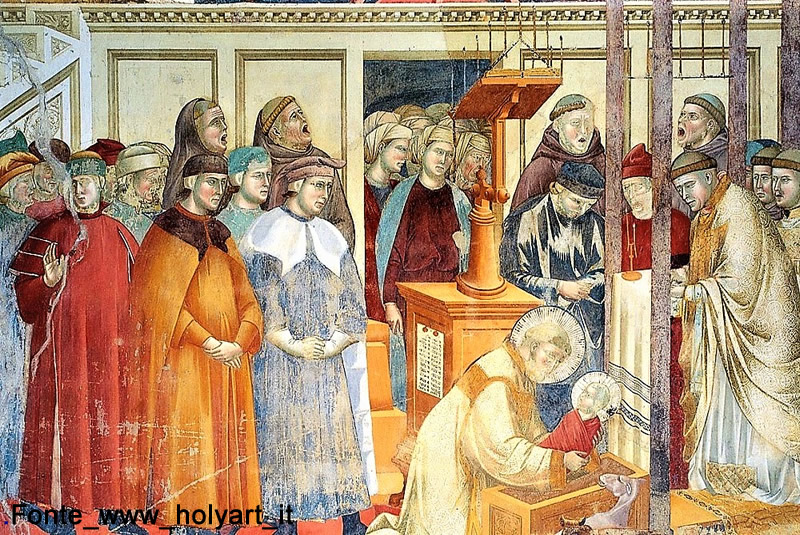
This year we are celebrating the eighth centenary of the living nativity scene that Francis of Assisi held at Greccio (Italy), in 1223[1]. It is generally considered that this event gave rise to “the enchanting image of the Christmas crèche”[2] and to the “intense spiritual atmosphere that surrounds Christmas”[3].
Sadly, today we have turned Christmas into an excuse for consumerism. Between lights, shopping, and gifts we are losing the ability to contemplate the humility and poverty of the Child Jesus, who calls us to follow in his footsteps by faithfully observing the Gospel.
Pope Francis invites us to “encourage” in our society the enchanting tradition “of the Christmas crèche”. He recognizes that it originated in the living nativity scene of Saint Francis in Greccio. This papal recognition does not negate the obvious similarities of that celebration with the medieval tradition of staging the Christmas mysteries. Saint Francis’ crèche was not the first staging of the nativity but its connection to the Eucharist, the way people present felt involved, and the charism of the Saint of Assisi may explain why the popular belief has considered Saint Francis as the initiator and propagator of the nativity scenes. Benedict XVI confirms that “the special, intense spiritual atmosphere that surrounds Christmas developed in the Middle Ages, thanks to Saint Francis of Assisi.”[4]
Francis’ representation did not include images, but only living beings. He wanted the real protagonists to be those present, including the ox and the donkey which, according to patristic exegesis, represented the Hebrews (ox) and the pagans (donkey). Therefore, all peoples and all creatures were included. Thomas of Celano states that even “the forest amplifies the cries and the boulders echo back the joyful crowd” (1Cel 85).
The synodal church have been reflected in some aspects of the celebration of the Nativity in Greccio. There, the friars and “the men and women of that land”, the rich and the poor, clergy-laity, nobles-plebeians… all participate actively, without claiming privileges or marking hierarchical differences. At the center of the scene are also the animals (ox, donkey), the hay, and even the jungle and rocks (1Cel 85). All join in the jubilation of the feast that seems to anticipate the cosmic fraternity of messianic times. Therefore, Francis exults: “Let the heavens rejoice and the earth exult, let the sea and its fullness resound, let the fields and all that is in them be joyful, sing to the Lord all the earth” (OfP 15,9).
In a consumerist and hyper-accelerated society, we need to return, metaphorically, to the refuge of Greccio, finding shelter in the rock, and allowing ourselves to be “wrapped in silence” (AdS 3).
Martín Carbajo-Núñez, OFM
[1] These paragraphs are taken from this recent publication, soon available in six languages: Carbajo-Núñez Martín, Celebrating life: The Rule and Christmas at Greccio (1223-2023), 2nd edition, Tau Publishing, Phoenix (AZ) 2023; Id., «Celebrare la vita: La Regola e il Natale di Greccio (1223-2023)», EDI, Napoli 2023; Id., Celebrando la vida: La Regla y Greccio (1223-2023), Efarantzazu, Vitoria-Gasteiz 2023.
[2] Francis, «Admirabile signum. Apostolic Letter» [AdS], (Dec. 1, 2019).
[3] Benedict XVI, «General audience» (Dec. 23, 2009).
[4] Benedict XVI, «General audience» (Dec. 23, 2009).

2 commenti
Excelente presentación escrita del nacimiento. Gracias Fr. Martin por su tiempo, talento, y el tesoro de su conocimiento.
Me alegro que le haya gustado. Expresemos también nosotros nuestras convicciones profundas con este “admirable signo”